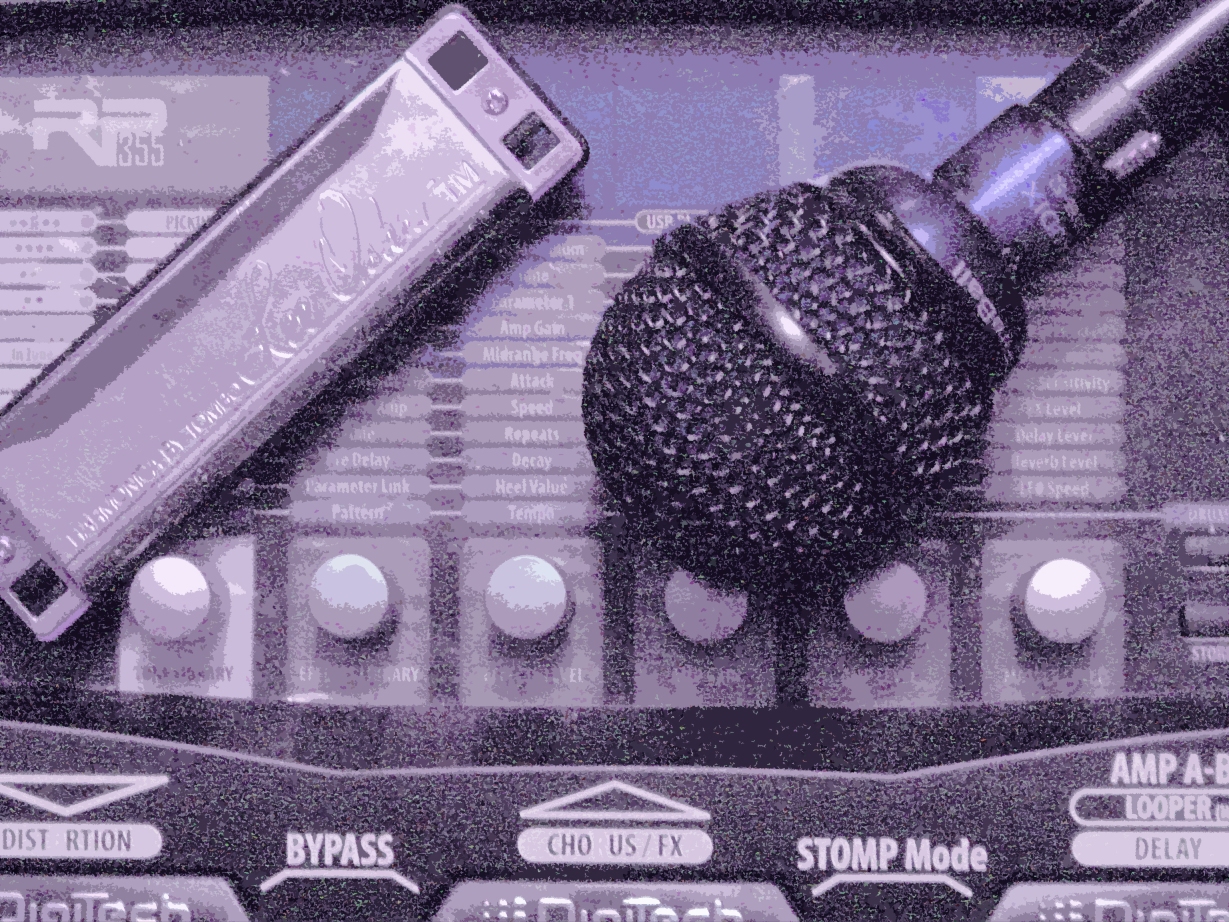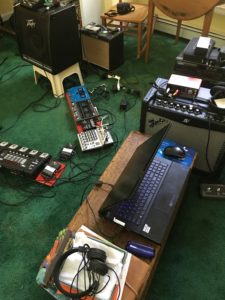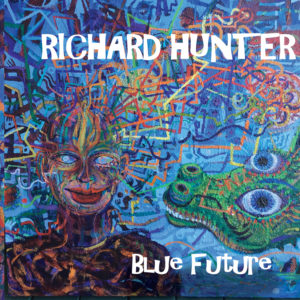
A little taste of the sounds of (a) Blue Future UPDATED
UPDATE: see the end of this post for a clip of the harp solo from my rough mix of “On The Road Again.”
Canned Heat’s Version of “On The Road Again” is one of my favorite records, and I’m covering it for “Blue Future”
The clip linked first below is a rough mix of the intro to my take on Al (Blind Owl) Wilson’s recording of “On the Road Again” with Canned Heat, a version of which will appear on my upcoming record “Blue Future.” I’ve tried in my approach to this tune to recognize Al Wilson’s great, unique harp sound and solo without imitating it. Where the original had some buzzy guitars, this one has lots of harmonicas that buzz and boom. Throughout I’ve dropped references to Wilson’s original. The original recording begins with a drone, so mine does too, but it’s a very different kind of drone. It’s initiated by Mike Brenner on lap steel, quickly joined by myself playing a battery of harps to produce a huge, dawn-of-time sound that swells into the groove, laid down by John Cunningham on bass, Mark Schreiber on drums, and Brenner. I recorded the lead harmonica lines–the ones that use an acoustic harp sound with a light sprinkling of amp mojo–live in the studio with the band.
One (Dorian Minor) diatonic harp does everything on this one
The harmonica sounds on this intro were all produced with the same Dorian-minor tuned Big River harp in G. I’m here using Lee Oskar’s naming system: you name the minor harp after its key in second position. In standard tuning terms, this is a C harp with the draw 3 and 7 reeds flatted 1/2 step. Played in second position, the result is a G dorian minor scale. It works beautifully for this song in lots of ways, most especially in terms of the great chording on this harp, perfect for rhythm work. In the first of two solos I recorded live in the studio with the band for this piece (included in the second clip below, at the end of this post), the lead harp plays lines in contrary motion over a 2-octave range in real time, and this tuning works wonderfully for that stuff. To put it bluntly, it’s hard to make an ugly sound on any chord anywhere on the harp with this tuning. (If you don’t like retuning harps yourself, you can either ask Seydel to make it for you, or you can buy Lee Oskar reed plates in G natural minor and C standard, and replace the draw plate in the C harp with the draw plate from the G Natural Minor harp.)
Harp FX Chains? We Got Lotsa Those
The harp tracks in this rough mix include:
1) An amped-up harp through an SM58 into the Fender Mustang III running a relatively low-gain Bassman patch. I could have made it tougher, but one of my nods to Wilson is to use a sound that’s less aggressive. Anyway, Pete Rydberg, the engineer on the session and a guy whose ears I trust, told me the original sound I turned to, a higher-gain Bassman patch, was way too grungy for the tune, and I agreed; Mike on the lap steel had plenty of dirt in his sound, and the distortion wasn’t making the harp cut through any better. Anyway, it’s easy to add distortion later in the recording process, not so easy to take it out once it’s there. So down went the gain.

2) An acoustic double of that harp part, recorded through the vocal mic in the booth while I recorded the amped-up part.
3) Rhythm harp tracks with two versions of the Digitech RP500 patch I used for the chorded solos on “Early to Bed” from my record “The Lucky One”–an amped-up patch with an octave-down pitch shift and a wah-wah. The difference between the two versions is that one has distortion added, and the other doesn’t. I hadn’t turned on the distortion for this patch before I recorded this track, and it produced a weird, liquid metal kind of sound that surges very dramatically when you work the expression pedal.
4) A track using an RP500 patch with a ’57 Tweed Deluxe amp model and a deep, fast vibropan effect. Vibropan pans the sound rapidly from one side of the stereo field to the other. It’s a psycho organ sound. That’s the sound I used for the high 9th on the drone; it sure sounds like some kind of controlled feedback there.
5) A track using the RP500 double-octave-down-plus-wah patch that I used for the low bass in “Early to Bed.” Here it sounds a lot like a tuba.
All the RP500 tracks were recorded with an Audix Fireball V mic. All the Mustang tracks were recorded with a Shure SM58. I think by now everybody who cares to knows that I use a lot of harmonica sounds on my tracks. If you can do it with guitars, I dunno know why it’s not okay to do it with harps. The key to using lots of layers of any instrument is to vary the sounds in those layers, and I find that the smooth sheen that the Fireball imparts to a track contrasts nicely with the rougher tones of the SM58.
Update: The Harp Solo Clip
Here’s all 24 bars of the first harp solo in “On The Road Again” from the same rough mix that the intro clip is from. A couple quick comments on that solo:
1) All the harps and processing are as described above.
2) The contrary motion lines on the lead harp that occur starting at :19 and ending at about :34 are played in real time. That’s not an effect, that’s harmonica technique.
3) The lines that start at :35 are an obvious homage to Al Wilson.
4) The open 5ths that start around :44 are likewise played in real time, not produced by an effect. Open 5ths really sound nice on a Dorian Minor tuned harp, and there sure are a lot of ’em.
This solo clip is a message from a Blue Future for sure. Enjoy.
If you liked that, you’ll like these:
the 21st century blues harmonica manifesto in sound
Get it on Amazon
Get it on iTunes
the rock harmonica masterpiece
Get it on Amazon
Get it on iTunes
Tags In
Related Posts
2 Comments
Leave a Reply
You must be logged in to post a comment.
WHAT’S NEW
Categories
- Audio/Video
- Blog
- Blue Future
- Digitech RP Tricks and Tips
- Discography, CDs, Projects, Info, Notes
- Featured Video
- For the Beginner
- Gallery
- Hunter's Effects
- Hunter's Music
- Huntersounds for Fender Mustang
- Meet the Pros
- More Video
- MPH: Maw/Preston/Hunter
- My Three Big Contributions
- Player's Resources
- Pro Tips & Techniques
- Recommended Artists & Recordings
- Recommended Gear
- Recorded Performances
- Reviews, Interviews, Testimonials
- The Lucky One
- Uncategorized
- Upcoming Performances
- Zoom G3 Tips and Tricks



SO freaking COOL!!!
Absolutely Awesome Richard. Occurs to me that the intro to the song ‘Spirit in the Sky’ is very similar, at least the ‘Doctor and the Medics’ version.